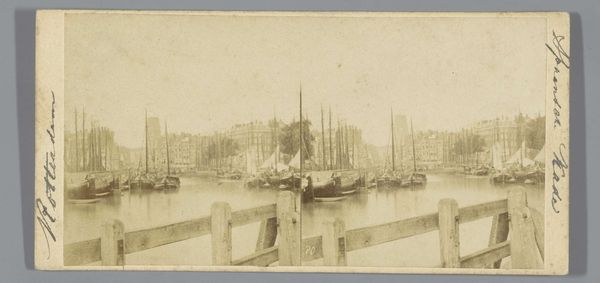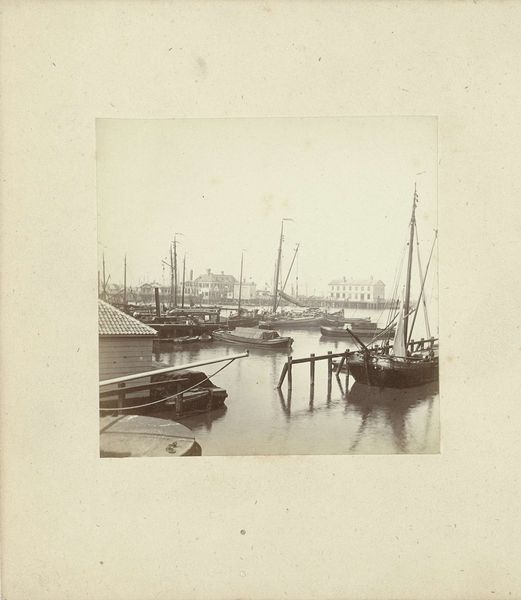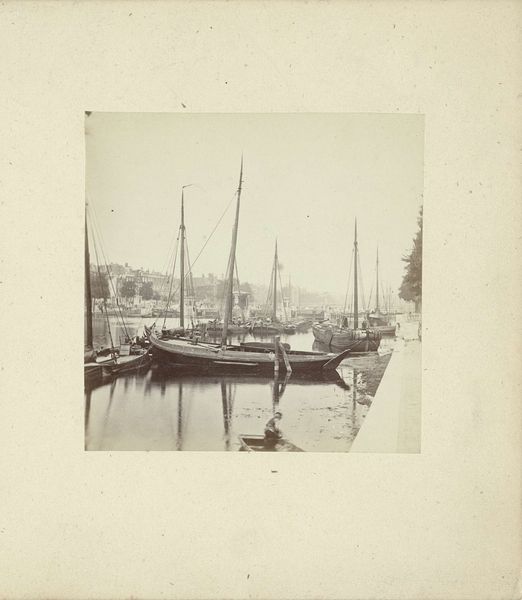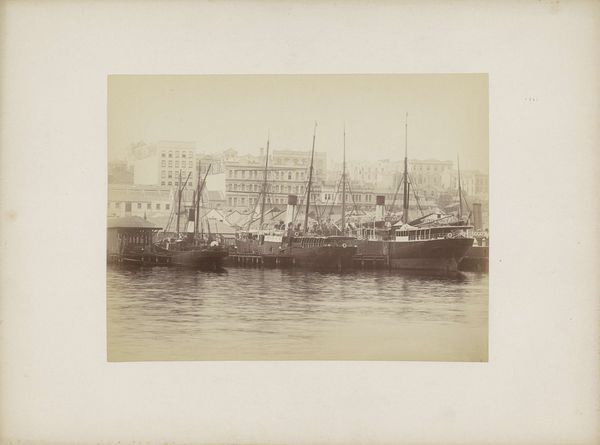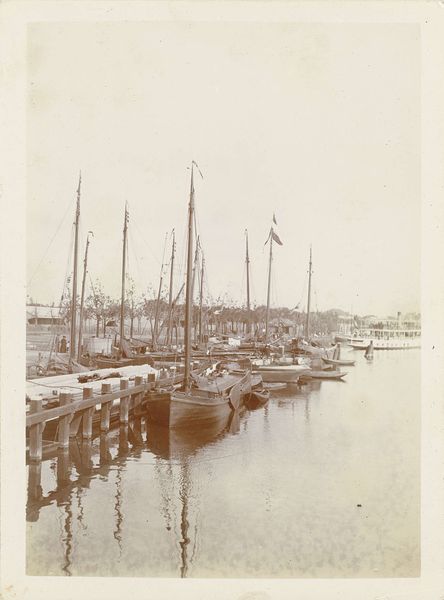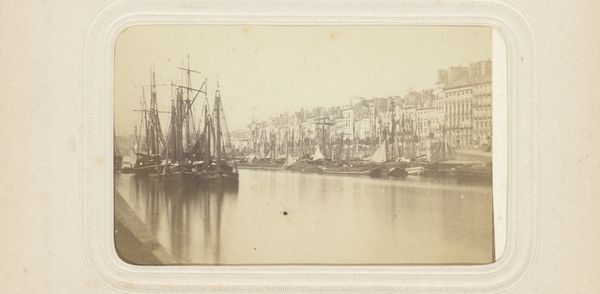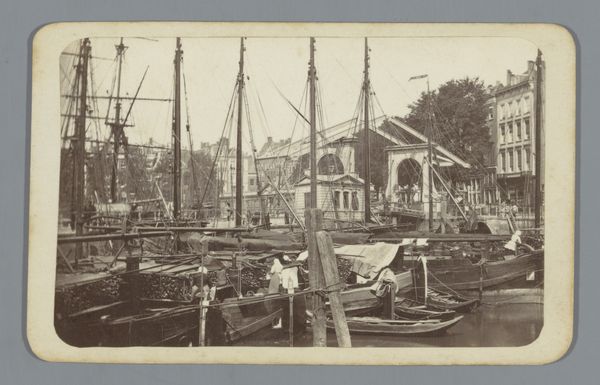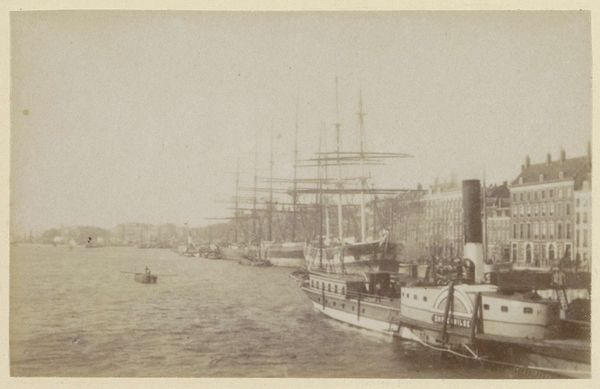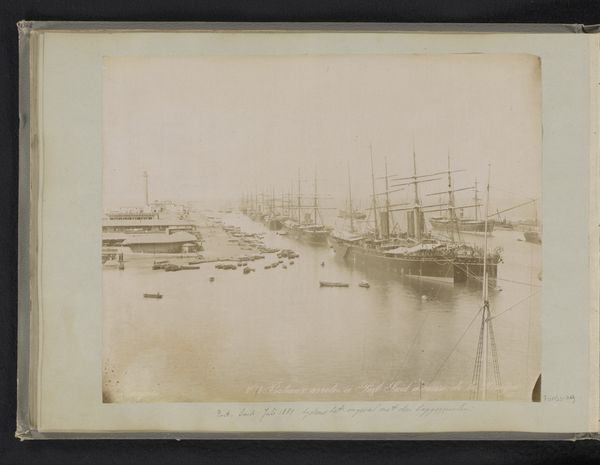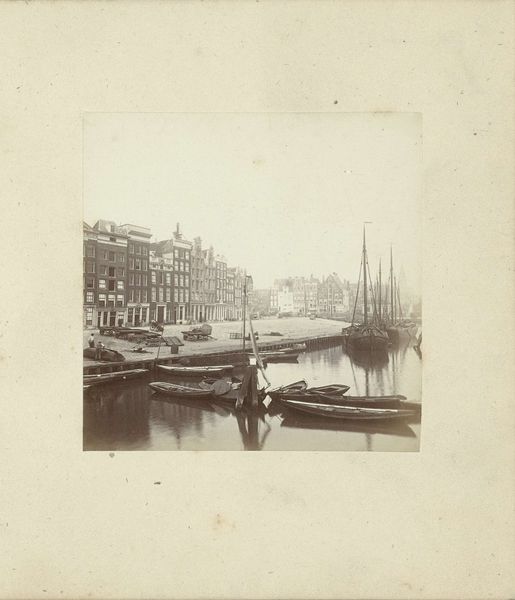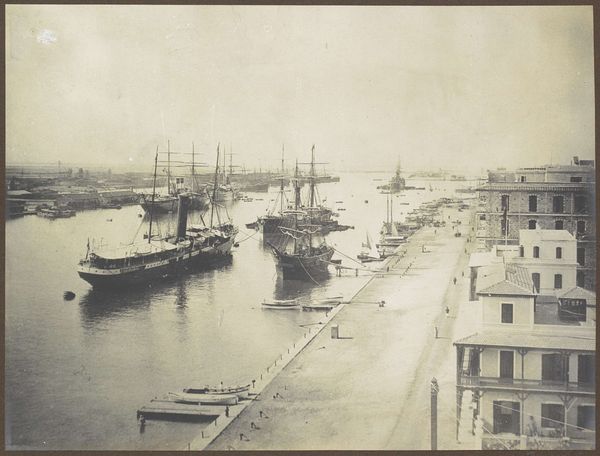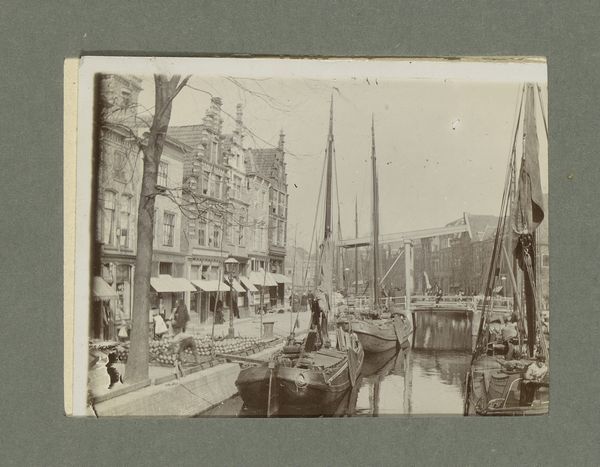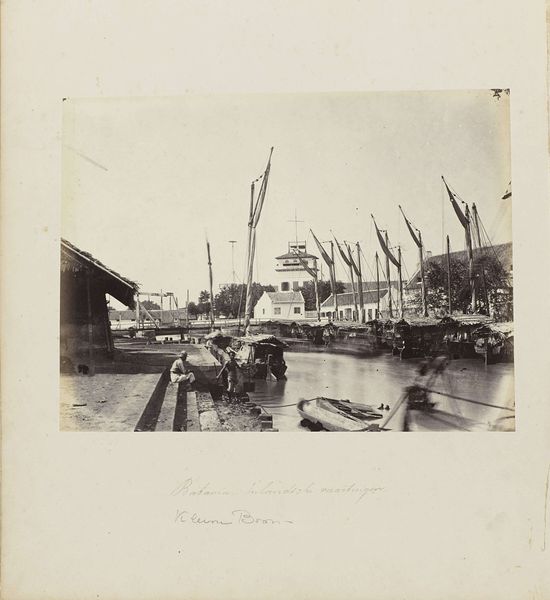
Decoratie op de Magere Brug bij de ontvangst van Willem III en Emma in Amsterdam 1879
0:00
0:00
photography, gelatin-silver-print
#
muted colour palette
#
dutch-golden-age
#
landscape
#
photography
#
gelatin-silver-print
#
cityscape
Dimensions: height 262 mm, width 326 mm, height 394 mm, width 477 mm
Copyright: Rijks Museum: Open Domain
Editor: This gelatin-silver print by Albert Greiner from 1879, titled "Decoratie op de Magere Brug bij de ontvangst van Willem III en Emma in Amsterdam", it captures a festive scene on a bridge. It has a lovely antique feel with a restrained palette and the decorations feel…performative. How do you interpret this work, given the historical context? Curator: I see it as a fascinating document of power and its performance in 19th-century Amsterdam. The photograph captures not just the decoration, but a carefully constructed image intended to solidify the monarchy's position. Consider, who is being celebrated and why? The arrival of Willem III and Emma wasn’t merely a happy event; it was a strategic move to shore up support for the monarchy. How might the working class have perceived this lavish display, especially considering the social inequalities of the time? Editor: That's a great point about the performance of power. The decorations now seem less about joy and more about political messaging, then the composition seems to emphasize this. Curator: Precisely! Greiner’s composition isn’t neutral. He’s showing us a particular viewpoint, likely sanctioned or even commissioned. The "Dutch Golden Age" style further romanticizes the event and attempts to connect it to a period of prosperity and national pride, even as social realities might have told a different story for many Amsterdammers. What does the presence of so many ships and boats signify? Is it purely decorative, or could it symbolize something more about trade and colonial power? Editor: Thinking about it that way, it could be both, reinforcing the idea of national pride intertwined with the benefits of global trade and, potentially, colonial exploitation. I didn’t catch the nuances at first, it seemed like just a nice archival photograph. Curator: It is precisely in these nuances that we find the photograph's complexity. By questioning whose story is being told, and how, we can unpack the layers of meaning embedded within this seemingly simple cityscape. Understanding these social and political elements gives the picture more profound significance. Editor: Absolutely. I’ll definitely look at these kinds of images with fresh eyes moving forward.
Comments
No comments
Be the first to comment and join the conversation on the ultimate creative platform.
